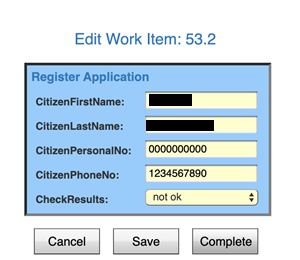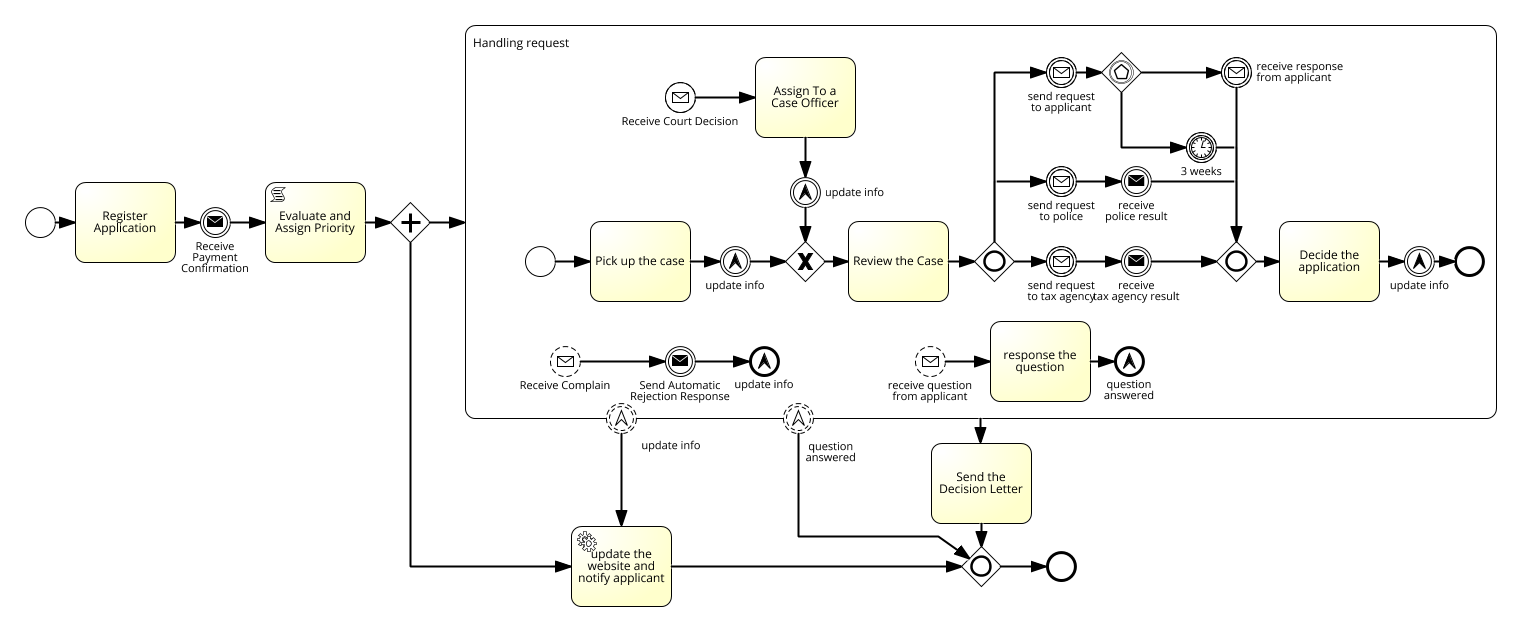Business Process Management (BPM) is a set of methods, techniques, and tools that aim to support designing, enacting, managing, and analyzing operational business processes [1]. It is a well-established research area with concrete business applications. There are two categories of business processes, i.e., workflow-based and knowledge-intensive based. The workflow-based BPM deal with repetitive processes, while knowledge-intensive based BPM deal with processes which depend on knowledge-workers decisions and skills. Business Process Design and Intelligence (BPDI) course is about workflow-based BPM.
In this course, students will learn about design techniques and languages to design workflow-based processes. An example of such languages is the Business Process Model and Notation (BPMN) standard. In addition, students will learn about Petri-nets, workflow-nets, and the YAWL language. To design business processes, students use WoPeD, YAWL, Signavio in this course. Here is an example of a business process model which is designed using BPMN 2.0:
Students will also learn how business processes can be analyzed. They will learn about both model-based and data-based process analysis techniques. The data-based analysis techniques are also knows as process mining. For model-based analysis techniques, students will learn about Reachability Graph and other techniques. They will use WoPeD and YAWL to analyze process models. For process mining, we are using ProM currently, but we aim to expand this section further. Here are few screenshots from students’ submissions for Process Mining assignment in this course:
 Students also will learn about different business process redesign techniques like heuristic rules. They will learn how process can be redesigned in a way to add more direct values for businesses. They will also learn about implementing and enacting business process models using Business Process Management Systems (BPMS). BPMSs are a sort of systems that enables enactment of business process models with minimum amount of code. They interpret the process models and generate required forms to enable people to run business processes. In this way, they enable quick responding to environmental changes which enables businesses to survive! In this course, we use YAWL. Here are some screenshot on student’s assignment in executing processes in YAWL:
Students also will learn about different business process redesign techniques like heuristic rules. They will learn how process can be redesigned in a way to add more direct values for businesses. They will also learn about implementing and enacting business process models using Business Process Management Systems (BPMS). BPMSs are a sort of systems that enables enactment of business process models with minimum amount of code. They interpret the process models and generate required forms to enable people to run business processes. In this way, they enable quick responding to environmental changes which enables businesses to survive! In this course, we use YAWL. Here are some screenshot on student’s assignment in executing processes in YAWL:

To sum up, students were very positive and happy by learning BPM and applying different techniques during the assignment. Here are some positive responses in course evaluation:
- “I have been enjoying this course a lot and I think that the course was well-structured and very learning for me. I really enjoy developing systems now thanks to BPDI and I had a lot of fun throughout the course.”
- “The most interesting thing is to do the assignment. This part increased the understanding of business process analysis and you can find more problems about your understanding.”
- “I would say this is the second best course I have ever had in DSV after ERP course. I found this course very interesting, and from the beginning to the end, I was very attentive. “
Tools used in this course:
 |
 |
 |
 |
References:
[1] Van Der Aalst, W. M., Ter Hofstede, A. H., & Weske, M. (2003, June). Business process management: A survey. In International conference on business process management (pp. 1-12). Springer, Berlin, Heidelberg.


